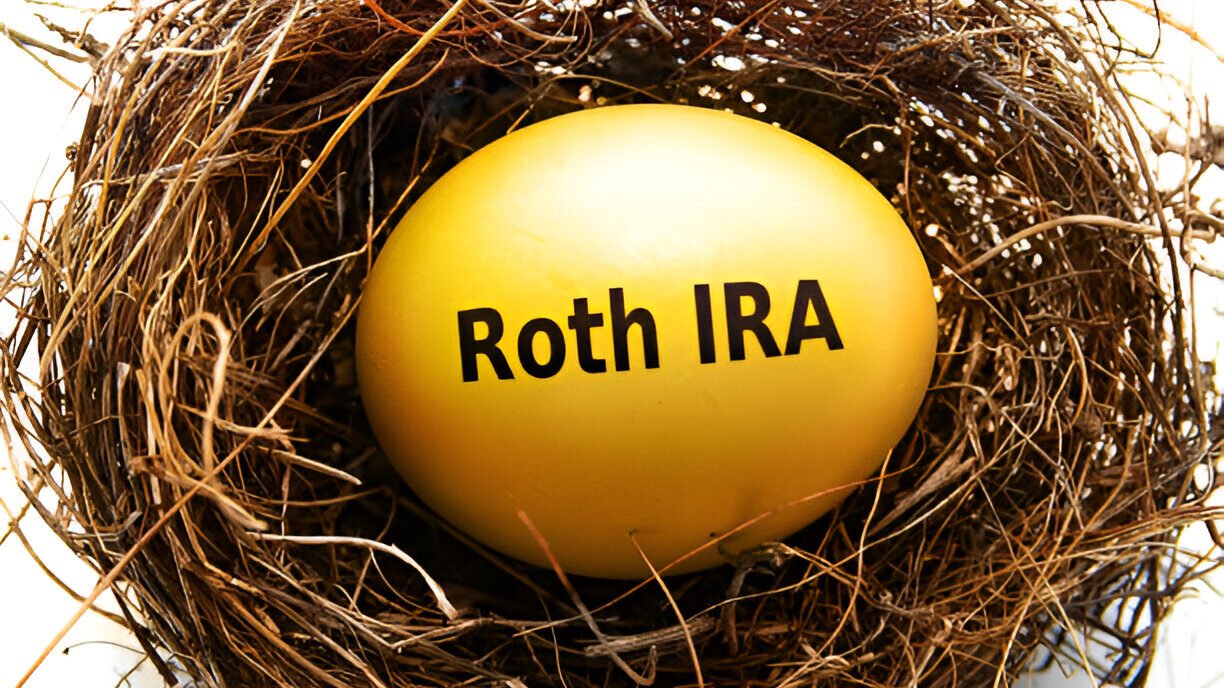10 Mistakes To avoid with your Roth IRA Augusta 2025
Table of Contents
Before you invest, know the 10 Mistakes To Avoid With Your Roth IRA. This simple guide can help you avoid penalties, taxes, and missed opportunities.
You just turned 50 and checked your Roth IRA balance. It’s $150,000 less than your friend’s, despite starting at the same time with similar contributions. Ouch.
That gut-punch moment happens to thousands of Americans every year because of simple Roth IRA mistakes that compound over decades.
By the end of this post, you’ll know exactly how to avoid the 10 most devastating Roth IRA blunders that can derail your retirement dreams. No complex jargon or financial advisor fees required.
Just straightforward fixes for the mistakes I’ve seen wreck retirement plans for 15+ years as a financial planner.
And mistake #3? It’s so common yet so catastrophic that even my most financially savvy clients never see it coming until it’s too late.
10 Mistakes To Avoid With Your Roth IRA
- Choosing the wrong type of IRA (Roth vs. Traditional)
- Believing you don’t earn enough to contribute
- Earning too much and contributing directly without a backdoor strategy
- Not contributing for a non-working spouse
- Contributing more than the annual limit
- Withdrawing earnings too early
- Breaking the rollover rules
- Ignoring the backdoor Roth IRA strategy
- Forgetting to update your beneficiary list
- Failing to take timely withdrawals from an inherited Roth IRA
Understanding the Fundamental Differences
Many people get tripped up on the Roth vs. Traditional IRA decision because they focus on the wrong factors. It’s not just about tax rates – it’s about your entire financial picture.
The biggest difference? When you pay taxes.
With a Traditional IRA, you’re basically telling the IRS “not now, but later.” You get tax deductions today, but eventually pay taxes on withdrawals during retirement.
With a Roth IRA, you’re saying “I’ll pay now so I can be free later.” No immediate tax break, but completely tax-free withdrawals in retirement.
Here’s how they stack up:
| Feature | Roth IRA | Traditional IRA |
| Contributions | After-tax dollars | Pre-tax dollars |
| Tax Break | Tax-free growth and withdrawals | Immediate tax deduction |
| Required Distributions | None during owner’s lifetime | Must start at age 73 |
| Early Withdrawal | Contributions always accessible tax/penalty-free | Taxes + 10% penalty before 59½ |
| Income Limits | Yes, phases out at higher incomes | No income limits for contributions |
The mistake? Automatically choosing Traditional because you want the tax break now. Or picking Roth simply because “tax-free” sounds better.
Think about it this way: If you believe your tax rate will be higher in retirement than it is today, Roth usually wins. If you expect to be in a lower tax bracket later, Traditional often makes more sense.
Don’t just follow generic advice. Your specific situation matters more than what worked for your colleague or neighbor. And remember – this isn’t an all-or-nothing decision. Many savvy investors maintain both types to create tax flexibility in retirement.
Not Earning Enough to Contribute

Think you need a six-figure salary to start a Roth IRA? That’s a costly misconception.
Many folks hold off on opening a Roth IRA because they believe their income isn’t high enough. They picture retirement accounts as tools for the wealthy or at least for people with “real jobs” and substantial paychecks.
This couldn’t be further from the truth. You don’t need to make big bucks to start building your retirement nest egg through a Roth IRA.
The beauty of Roth IRAs is their accessibility. Even modest contributions can grow significantly over time thanks to compound interest. That $50 you manage to save each month might seem insignificant now, but over decades? It transforms into something substantial.
What stops most people isn’t actually their income level—it’s the belief that small contributions aren’t worth the effort. But that $600 you can save in a year ($50 monthly) could be worth thousands by retirement age.
Remember too that income requirements for Roth IRAs have a floor and a ceiling. While you can’t contribute more than you earn in a year, there’s no minimum income requirement to open one.
Fast Fact
The IRS does set income limits, but they’re ceiling caps, not minimums. For 2025, single filers can contribute the full amount to a Roth IRA until their modified adjusted gross income hits $146,000. For married couples filing jointly, that limit is $230,000.
So yes, you can start your Roth IRA with your side hustle income, part-time job earnings, or even allowance money. The key is starting—period.
Earning Too Much to Contribute
Ever thought you’re making too much money for a Roth IRA? Sounds like a champagne problem, right? But it’s a real issue that trips up plenty of folks.
Income Limits Explained
The IRS doesn’t want high-income earners enjoying all those tax-free Roth benefits. As of 2025, if you’re single and your modified adjusted gross income (MAGI) exceeds $161,000, you can kiss your Roth contributions goodbye. For married couples filing jointly, that ceiling sits at $240,000.
And it’s not just a hard cutoff. There’s a phase-out range where your contribution limit gradually shrinks:
| Filing Status | Full Contribution | Phase-Out Range | No Contribution |
| Single | Under $146,000 | $146,000-$161,000 | Over $161,000 |
| Married Joint | Under $230,000 | $230,000-$240,000 | Over $240,000 |
What Happens If You Mess Up?
Contributed when you shouldn’t have? The IRS calls this an “excess contribution” and they’re not fans. You’ll face a 6% penalty on that money every year until you fix it.
That’s $600 annually on a maxed-out $10,000 contribution just flushed down the drain!
Backdoor Roth: The High-Earner’s Secret Weapon
Making too much doesn’t mean you’re totally locked out. The backdoor Roth strategy lets you contribute to a traditional IRA (which has no income limits), then convert it to a Roth.
This works because while the IRS limits who can contribute directly, they don’t restrict who can convert.
Just watch out for the “pro-rata rule” if you have existing traditional IRA balances. It can make a chunk of your conversion taxable when you weren’t expecting it.
Smart money moves aren’t about making more—they’re about keeping more of what you make. Don’t let income limits derail your retirement plans.
Not Contributing for Your Spouse
Did you know that your spouse could be missing out on a tax-advantaged retirement goldmine? Many people completely overlook this opportunity, and it’s costing couples thousands in potential retirement savings.
The Spousal IRA Opportunity
Here’s something that flies under the radar: you can contribute to a Roth IRA for your non-working spouse even if they have zero income. Yes, you read that right.
The IRS actually allows what’s called a “spousal IRA contribution,” but most couples have no idea this exists. If you’re married filing jointly, and one spouse works while the other doesn’t, the working spouse can contribute to both IRAs—up to the full annual limit for each person.
Think about it: that’s potentially an extra $6,500 per year (or $7,500 if your spouse is 50+) growing tax-free for decades. Over 30 years at a 7% return, that’s an additional $600,000+ your family could have in retirement.
Requirements for Spousal Contributions
To make this work:
- You must be legally married
- You must file taxes jointly
- The working spouse must earn enough income to cover both contributions
This strategy is especially powerful for:
- Stay-at-home parents
- Spouses who temporarily leave the workforce
- Partners who run the household while the other earns income
Don’t make the costly mistake of thinking retirement accounts are individual endeavors. Marriage gives you financial advantages—this is one of the biggest that most financial advisors rarely mention.
Next time you’re planning your retirement contributions, remember there’s likely an empty Roth IRA waiting to be funded for your better half.
Contributing Too Much
You know that feeling when you’re super excited about building your retirement nest egg and you end up going a bit overboard? Yeah, that enthusiasm can actually cause problems with your Roth IRA.
The IRS has strict contribution limits for a reason, and exceeding them can lead to some pretty annoying tax headaches.
For 2025, you can contribute up to $7,000 to your Roth IRA if you’re under 50, or $8,000 if you’re 50 or older thanks to the catch-up provision. Going over these limits? You’re in excess contribution territory.
What happens if you mess up? Nothing good, I promise. The IRS slaps a 6% penalty tax on those excess contributions. And here’s the kicker – that penalty applies EVERY YEAR until you fix the problem.
So if you accidentally contributed $2,000 too much and don’t correct it, you’re looking at $120 in penalties the first year, another $120 the next year, and so on. That adds up fast!
The fix isn’t complicated, but it requires attention to detail:
- Withdraw the excess amount plus any earnings before your tax filing deadline (including extensions)
- Alternatively, you can apply the excess to next year’s contribution (but you’ll still pay the 6% penalty once)
Another common mistake? Not realizing that your eligibility to contribute phases out at higher income levels. For 2025, if your modified adjusted gross income exceeds $146,000 (single) or $230,000 (married filing jointly), your contribution limit starts decreasing until it hits zero.
Track your contributions carefully throughout the year, especially if you use automatic deposits or contribute to multiple IRAs. Your future self will thank you.
Withdrawing Earnings Too Early

Ah, the Roth IRA withdrawal rules. They’re like that friend who’s super generous but has all these weird conditions before they’ll spot you cash.
One of the biggest blunders people make is pulling out earnings before they’re supposed to. Sure, you can take out your contributions anytime – that’s your money. But the earnings? That’s where the IRS gets picky.
Here’s the deal: withdraw earnings before age 59½ and before your account has been open for 5 years, and you’re looking at income taxes PLUS a 10% penalty. That’s the government basically saying, “We told you not to touch that.”
I’ve seen folks hit with unexpected medical bills or home repairs who think, “I’ll just dip into my Roth for a bit.” Three months later, they’re staring at a tax bill wondering what happened.
The 5-year rule trips up even savvy investors. Each conversion you make has its own 5-year clock. So that Roth you opened last year? The clock started then, even if you’ve had another Roth for 20 years.
There are exceptions – first-time home purchases (up to $10,000), college expenses, birth/adoption expenses (up to $5,000), or if you become disabled. But honestly, most people don’t qualify.
Think of your Roth earnings like a fine wine – the longer you leave them alone, the better they get. And unlike that wine, they’ll never turn to vinegar if you wait too long.
The real magic of a Roth happens when you let those earnings compound for decades, then withdraw them completely tax-free in retirement. Don’t sacrifice tomorrow’s tax-free feast for today’s snack.
Breaking the Rollover Rules
Rollover rules for your Roth IRA might sound like boring financial mumbo-jumbo, but mess these up and you’re looking at some painful tax consequences.
The IRS doesn’t play around with rollovers. They’ve set up specific rules that, when broken, can transform your smart investment strategy into an expensive mistake.
The 60-Day Rule Trap
You’ve got exactly 60 days to complete a rollover after receiving funds from your IRA. Not 61 days. Not 62. Sixty.
Miss this deadline and the entire amount becomes taxable income. Plus, if you’re under 59½, tack on another 10% early withdrawal penalty. Ouch.
I’ve seen people get their rollover check, set it aside for “safekeeping,” and then completely forget about it until it’s too late. The calendar doesn’t care about your good intentions.
The Once-Per-Year Limitation
Think you can move your money around frequently between IRAs? Think again.
You can only do one IRA-to-IRA rollover in any 12-month period. This rule applies to all your IRAs collectively – traditional and Roth combined.
Try to do a second rollover within that timeframe, and the amount becomes fully taxable plus potential penalties.
The kicker? This limitation doesn’t apply to trustee-to-trustee transfers where the money moves directly between financial institutions without passing through your hands. So always opt for direct transfers when possible.
Partial Rollover Pitfalls
Rolling over only part of a distribution? The IRS takes a proportional approach to determine what’s taxable.
For example, if your traditional IRA contains both deductible and non-deductible contributions, you can’t cherry-pick and only roll over the tax-free portion. The IRS sees your IRAs as one big pot and calculates taxability proportionally.
Many investors trip up here, assuming they can be selective about which “type” of money they’re rolling over.
Rolling Over the Money Yourself

Want to know a quick way to mess up your Roth IRA? Handle the rollover yourself. Seriously, it’s a recipe for disaster if you’re not careful.
When you decide to move money from one retirement account to another, you’ve got two options: direct trustee-to-trustee transfer or doing it yourself. The DIY route is where people slip up—and the tax consequences can be brutal.
Here’s the trap: when you take possession of your retirement funds during a rollover, the IRS starts a 60-day countdown. Miss that deadline by even one day, and boom—your entire distribution gets taxed as income, plus you’ll face a 10% early withdrawal penalty if you’re under 59½.
I’ve seen people lose thousands because their check got lost in the mail or they simply forgot the deadline while dealing with life’s chaos.
And don’t think you can just rollover whenever you want. The IRS limits you to one rollover per 12-month period across all your IRAs. Mess that up, and you’re looking at excess contribution penalties that compound year after year.
The kicker? These mistakes are completely avoidable. Just opt for the direct transfer method. Your money moves directly from one custodian to another—you never touch it, the 60-day rule doesn’t apply, and there’s no limit on how many direct transfers you can do.
Why gamble with your retirement savings when there’s a foolproof alternative? The few minutes it takes to set up a direct transfer could save you a tax nightmare down the road.
Not Considering a Backdoor Roth IRA
High-income earners often think Roth IRAs are off the table for them. And they’re partially right – the IRS does set income limits that can prevent you from directly contributing to a Roth IRA.
For 2025, if your modified adjusted gross income exceeds $160,000 (single filers) or $240,000 (married filing jointly), you’re blocked from making direct contributions.
But here’s what many people miss: the backdoor Roth IRA strategy.
This perfectly legal workaround involves making a non-deductible contribution to a traditional IRA and then converting it to a Roth IRA. Since there are no income limits on conversions, this effectively bypasses the income restrictions.
Another Tax Trap
The pro-rata rule is the biggest gotcha with backdoor Roth conversions.
Think of it this way: If you have existing pre-tax money in any traditional IRA accounts (including SEP or SIMPLE IRAs), the IRS won’t let you cherry-pick just your non-deductible contributions for conversion.
Instead, they’ll look at all your IRA money as one big pool. Your tax bill on the conversion will be proportional to how much pre-tax money sits in all your IRAs combined.
For example, if 90% of your total IRA balance is pre-tax money, then 90% of any conversion would be taxable – completely defeating the purpose of the backdoor strategy.
Important
Timing matters enormously with backdoor Roth conversions. The step transaction doctrine means the IRS could potentially challenge your backdoor Roth if it looks like you’re just trying to circumvent income limits.
Many tax professionals recommend waiting a reasonable time between your traditional IRA contribution and the conversion – perhaps a month or more.
Documentation is your best friend here. Keep meticulous records of all transactions, including Form 8606 for non-deductible IRA contributions.
And always consult with a qualified tax professional before attempting this strategy. The rules are complex and constantly changing, and mistakes can trigger unexpected tax bills or penalties.
Forgetting Your Beneficiary List
Think about this: you’ve spent years building up your Roth IRA, making smart investment decisions, and planning for your future. But there’s one tiny detail you overlooked that could derail your entire inheritance plan.
Your beneficiary designation.
It happens more often than you’d imagine. People set up their Roth IRAs, name their beneficiaries, and then… life happens. They get married, divorced, have children, lose loved ones – and completely forget to update that critical piece of paper.
Here’s why this matters so much: your Roth IRA beneficiary designation overrides your will. Let me repeat that. It doesn’t matter what your will says – if your ex-spouse is still listed as your Roth IRA beneficiary, guess who’s getting that money?
I’ve seen this play out countless times. A client passes away, and their current spouse is shocked to discover the deceased’s Roth IRA – sometimes worth hundreds of thousands of dollars – is legally required to go to an ex-spouse they divorced 15 years ago.
The courts can’t help. The IRA custodian can’t help. The beneficiary form is a legal contract that trumps everything else.
Make it a habit to review your beneficiary designations annually, or after any major life event:
- Marriage or divorce
- Birth or adoption of a child
- Death of a current beneficiary
- Significant changes in relationships
And don’t forget to name contingent beneficiaries as well. If your primary beneficiary passes away before you do (or simultaneously), having backups ensures your assets go where you want them to
Failing to Withdraw Inherited Roth Money
You’ve just inherited a Roth IRA. Congratulations! Wait, no. That’s not quite right. I’m sorry for your loss. But now you have this account and you’re thinking, “Great! Tax-free money I can let grow forever!”
Pump the brakes. That’s not how it works.
One of the biggest mistakes people make with inherited Roth IRAs is simply ignoring them. Maybe you think since Roth IRAs don’t have required minimum distributions (RMDs) during the original owner’s lifetime, the same rules apply when you inherit one.
They don’t.
The IRS wants their piece of the pie eventually, and they’ve set up strict timelines for when you need to withdraw inherited Roth funds.
A. Fast Fact
The rules changed dramatically in 2020 with the SECURE Act. Before, non-spouse beneficiaries could stretch distributions over their lifetime. Now, most non-spouse beneficiaries must empty the entire account within 10 years of the original owner’s death.
Miss this deadline and you’re looking at a brutal 50% penalty on whatever you should have withdrawn but didn’t.
Think about that for a second. Half your money. Gone. To penalties.
Spouses have more flexibility – they can roll the inherited Roth into their own Roth IRA or treat it as their own. But even they need to understand the rules that apply to their specific situation.
The truly frustrating part? Unlike traditional IRAs, Roth IRA withdrawals would have been tax-free anyway if you’d followed the rules. The government isn’t even collecting taxes on these penalties – they’re purely punitive for not playing by the rules.
Skipping a Roth Since You Already Have a 401(k)
“I have a 401(k) through work, so I don’t need a Roth IRA.”
If that sounds like you, you’re making a classic retirement planning mistake.
Many folks think of retirement accounts as an either/or situation. You either contribute to your employer’s 401(k) or you open an IRA. But here’s the truth – these accounts aren’t competitors, they’re teammates.
Your 401(k) is great. You get those sweet employer matches (hello, free money!), higher contribution limits, and the convenience of automatic payroll deductions. But a Roth IRA brings different perks to the table.
With a Roth IRA, you’re paying taxes now to enjoy tax-free withdrawals later. Think about it – when you retire and start taking money from your Roth IRA, you won’t owe the IRS a single penny on those withdrawals. Not on your contributions, not on your earnings. Nothing.
Plus, Roth IRAs offer flexibility that 401(k)s just can’t match:
| Roth IRA Advantages | 401(k) Limitations |
| Tax-free growth and withdrawals in retirement | Taxable withdrawals |
| No required minimum distributions | RMDs starting at age 73 |
| More investment options | Limited to plan’s investment menu |
| Can withdraw contributions anytime without penalty | Early withdrawals generally penalized |
The smart move? Use both. Max out your employer match in your 401(k) first (never leave free money on the table), then direct additional retirement savings to a Roth IRA for tax diversification.
Your future self will thank you for creating multiple streams of retirement income with different tax treatments. That’s how savvy investors maximize their retirement security.
I’m Near Retirement Age. Should I Roll Over My Money Into a Roth IRA?
The Roth Conversion Question When You’re Older
Thinking about rolling your traditional retirement accounts into a Roth IRA as you approach retirement? This decision isn’t as straightforward as some financial advisors make it sound.
The conventional wisdom says converting to a Roth means paying taxes now to enjoy tax-free withdrawals later. But when you’re near retirement age, the math gets complicated.
Here’s the thing – Roth conversions near retirement can be a terrible mistake for many people. Why? Because you’re paying a potentially high tax bill today when your income (and tax rate) might actually drop significantly once you retire.
Picture this: You’re 62, earning $120,000 annually, and considering converting your $500,000 traditional IRA to a Roth. That conversion could push you into a higher tax bracket and cost tens of thousands in taxes right now – money that could otherwise stay invested.
For folks nearing retirement, a better approach might be:
- Convert small amounts gradually over several years
- Wait until after retirement when your income drops
- Only convert enough to fill up your lower tax brackets
The exception? If you expect to be in an unusually high tax bracket in retirement or have substantial pension income that will keep your tax rate high, a conversion might make sense.
The 5-year rule adds another wrinkle – any converted funds must sit in your Roth for five years before you can touch the earnings tax-free. If you’re 67, that means waiting until 72 to fully benefit.
Bottom line: Don’t let anyone pressure you into a full Roth conversion just before retirement. The immediate tax hit rarely justifies the future benefits when you’re in your 60s or 70s.
What Are the Roth IRA Contribution Limits for 2024 and 2025?

Understanding Roth IRA Contribution Limits for 2024 and 2025
Keeping track of how much you can put into your Roth IRA is crucial if you want to avoid one of the biggest mistakes: over-contributing and facing penalties.
For 2024, the IRS has set the contribution limit at $7,000 for individuals under 50 years old. If you’re 50 or older, you get a catch-up provision that bumps your limit to $8,000.
Good news for 2025 – these limits are going up! The standard contribution limit increases to $7,500 for those under 50, while the 50-and-over crowd can contribute up to $8,500.
But here’s where people mess up: these limits apply across all your IRAs combined. That means if you have both a traditional and a Roth IRA, your total contributions to both accounts can’t exceed these limits.
Income plays a huge role too. For 2024, if you’re single with a modified adjusted gross income (MAGI) above $161,000, you can’t contribute to a Roth IRA at all. Between $146,000 and $161,000, you can make partial contributions.
For married couples filing jointly in 2024, the phase-out range is $230,000 to $240,000.
In 2025, these income limits are rising slightly. Singles will have a phase-out range of $149,000 to $164,000, while married couples filing jointly will face phase-outs between $235,000 and $245,000.
Making this mistake can cost you. The penalty for excess contributions is 6% per year for as long as the excess remains in your account. That’s basically throwing money away when you could be growing it instead.
What Are the Roth IRA Income Phaseout Ranges for 2024 and 2025?
Understanding Roth IRA Income Limits for 2024-2025
The IRS doesn’t want high-income earners to enjoy all the tax-free growth benefits of Roth IRAs. That’s why they’ve set up income phaseout ranges that determine who can contribute the full amount, a reduced amount, or nothing at all.
For 2024, here’s what you need to know:
- Single filers and heads of household: Phaseout begins at $146,000 and you’re completely ineligible at $161,000
- Married filing jointly: Phaseout starts at $230,000 and ends at $240,000
- Married filing separately: A tight range of $0-$10,000 (yes, really)
For 2025, the IRS has adjusted these ranges for inflation:
- Single filers and heads of household: $149,000-$164,000
- Married filing jointly: $235,000-$245,000
- Married filing separately: Still $0-$10,000
If your income falls within these ranges, you can still contribute, but not the full amount. The contribution limit decreases gradually until it hits zero at the upper end.
For example, if you’re single making $150,000 in 2024, you’re about 27% into the phaseout range, so you can contribute about 73% of the maximum contribution.
Many folks make the costly mistake of ignoring these limits. If you contribute when your income is too high, you’ll face a 6% excess contribution penalty every year until you fix the error.
Smart investors who exceed these limits often use the “backdoor Roth” strategy – contributing to a Traditional IRA and then converting it to a Roth. This workaround remains perfectly legal as of June 2025.

